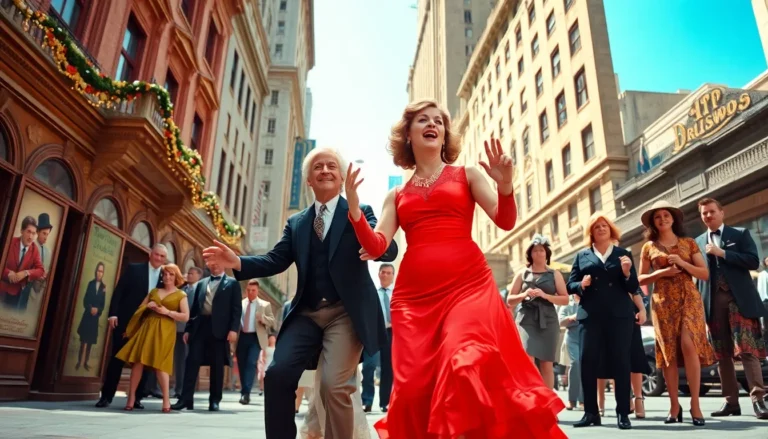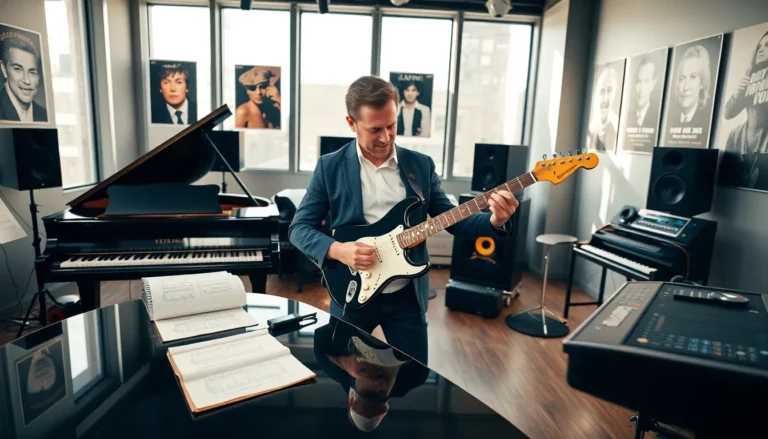Table of Contents
ToggleGather ’round, movie lovers. If you think superheroes only thrive in Marvel or DC universes, it’s time to meet a less mainstream champion: The Spirit. With a quirky blend of style and story, this film delivers not only action but also a twist of humor. Set in a world drenched with sinister villains and bold flirtations, it’s a rollercoaster that grabs your attention from the very start. Ready for a jump into the world of crime-fighting with a dash of vintage flair? Let’s embark on this cinematic journey together.
Background of The Spirit

The Creation and Development Process
The Spirit made its debut in the 1940s, stemming from the creative genius of Will Eisner. This comic book wasn’t just another superhero story: it was a rich tapestry of crime, morality, and the grit of urban life. Eisner’s artistic approach combined storytelling with illustration in a way that elevated the medium to new artistic heights. Fast forward to the early 2000s, when director Frank Miller sought to bring Eisner’s beloved character to the big screen. The film’s journey was no walk in the park. Developing a feature film based on a comic that had set significant benchmarks over decades required meticulous care. Miller aimed to remain faithful to the source, while upgrading the narrative for modern viewers.
Influence of the Original Comic
The Spirit comic strips were notable for their groundbreaking narrative techniques and visual storytelling. Eisner introduced complex villains and morally ambiguous heroes, setting a precedent that many would follow. The film mirrors these qualities, attempting to encapsulate the mood and essence while introducing a fresh perspective. The signature art style of black and white, fused with vivid colors during fight scenes, pays homage to the comic’s original aesthetic, which captivated readers with its bold, graphic novels.
Synopsis and Key Themes
Character Analysis
At the heart of The Spirit is Denny Colt, known as The Spirit, a seemingly invincible detective who rises from the dead to protect Central City. This characterization poses intriguing questions about heroism and morality. He exhibits charm and wit, making him relatable, yet he often indulges in reckless bravado that puts him at odds with traditional hero garments. We also meet the alluring femme fatale, Sand Saref, who adds depth to Colt’s character. Their complex relationship showcases the theme of love intertwined with danger. Each supporting character, from ruthless criminals to wise allies, serves as a mirror reflecting The Spirit’s inner struggles and moral dilemmas.
The Spirit: Hero or Anti-Hero?
The grey area of morality is a recurring theme in The Spirit. Colt’s alter ego can be seen more as an anti-hero than a classic savior. He operates with a sense of justice but often enjoys the thrill of the chase, even if it means bending the rules. This gives viewers the chance to evaluate their perceptions of heroism. Is he a bona fide protector, or does his whimsical approach lead him down a morally ambiguous path? The narrative forces us to question whether the ends truly justify the means in the world of vigilantes.
Supporting Characters and Their Roles
Supporting characters play pivotal roles that enrich the story. The Spirit’s adversaries, especially the criminal mastermind Octopus, bring forth challenges that force him to confront both physical and ethical dilemmas. Octopus, portrayed as a flamboyant yet dangerous figure, embodies the chaotic energy that The Spirit grapples with. Meanwhile, the police officers and allies provide comic relief and camaraderie, portraying differing perspectives on law enforcement and justice. Through these characters, the film brings forward the age-old battle of good versus evil, while shedding light on the grey areas, creating multi-dimensional personas that resonate with the audience.
Critical Reception
Box Office Performance and Audience Reactions
Upon its release, The Spirit faced mixed reviews, landing a box office performance that left much to be desired. While some viewers appreciated its visual style and humor, others were left perplexed by its narrative choices. Even though the quality of the film not aligning with Eisner’s legacy in the eyes of purists, it did gain a cult following, particularly among those who value quirky aesthetics over traditional storytelling. Many found it refreshing, even if not wholly successful, echoing sentiments that art is subjective. Festival showcases perhaps showcased its stronger aspects, drawing in niche audiences who resonate with its unique take.
Critical Reviews and Commentary
The critical landscape for The Spirit skimmed the surfaces of both appreciation and disappointment. Cinematographers praised its striking visuals, with an art deco representation that was a feast for the eyes. But, critics lamented its disjointed plot, leading to a divergence between the film’s ambition and execution. Reviews often juxtaposed the film’s kinetic flair against its failure to deliver a coherent narrative, asserting that while it possessed style in spades, it lacked substance. Some commentators noted that the film’s identity felt torn, caught between honoring the comic and appealing to mainstream audiences.
Legacy and Impact on the Genre
Even though its flaws, The Spirit holds a distinct place in the world of comic book adaptations. It dared to experiment with visual storytelling and infused elements of classic noir, paving the way for future films to embrace stylized aesthetics. The film’s ambition served as a precursor to later adaptations that sought to blend comic roots with cinematic flair. Its legacy reminds audiences and filmmakers alike that not every venture needs to be a grand success: sometimes, the pursuit of artistic vision reshapes perceptions and leads to future innovations in storytelling.







